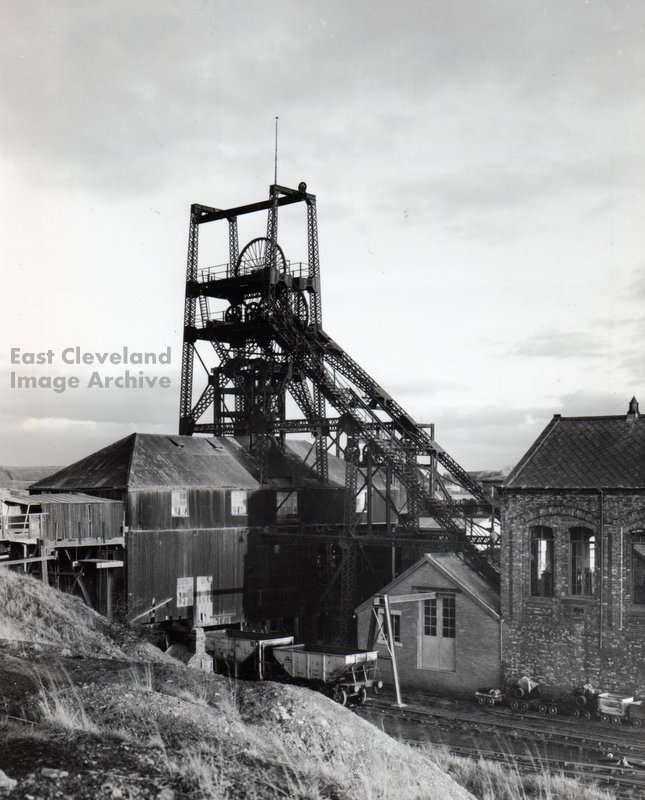
The last mine to close in Cleveland, North Skelton Mine seen in it’s final month of 1964.
Image courtesy of George Pearson (via Jeff Templeman).
|
|
||
 The last mine to close in Cleveland, North Skelton Mine seen in it’s final month of 1964. Image courtesy of George Pearson (via Jeff Templeman). 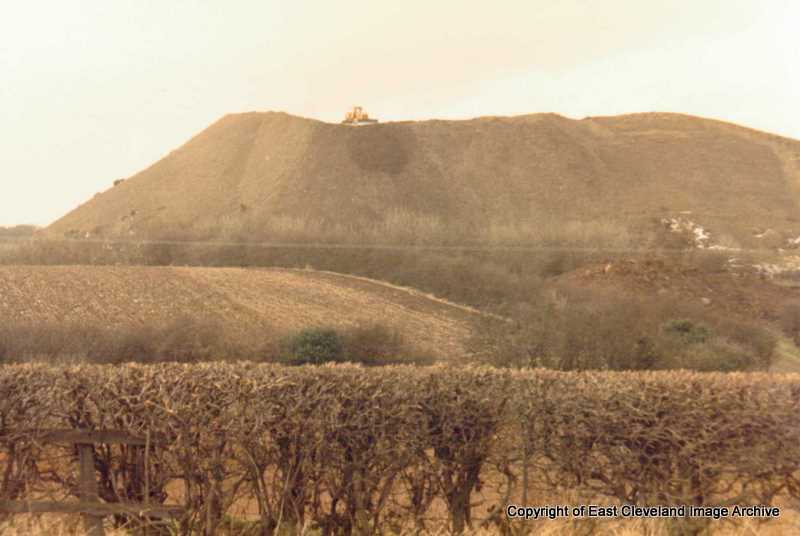 A bulldozer on top, levels Liverton Mine shale heap. Can our knowledgeable viewers will tell us the year this happened? Karl Dale advises: ”I think it was flattened in 1984/1985, my dad is the one on the bulldozer”. Image courtesy Eric Johnson and thanks to Karl Dale for the update. 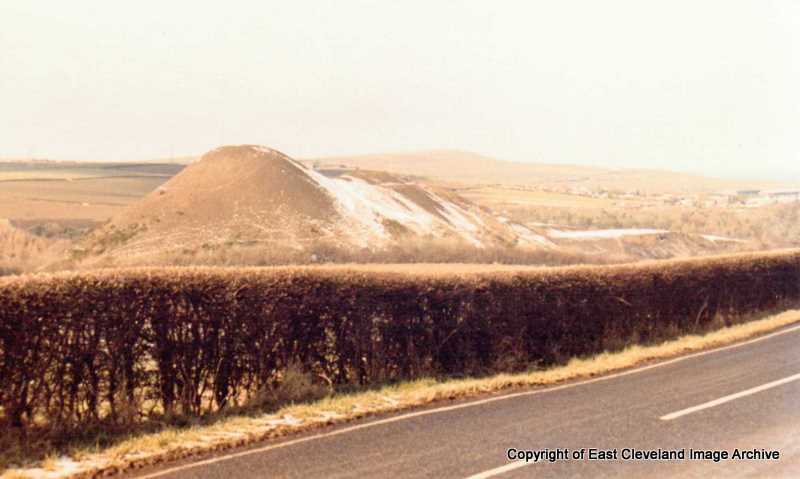 The last winter view, before Liverton Mines shale heap was altered forever. Image courtesy of Eric Johnson. 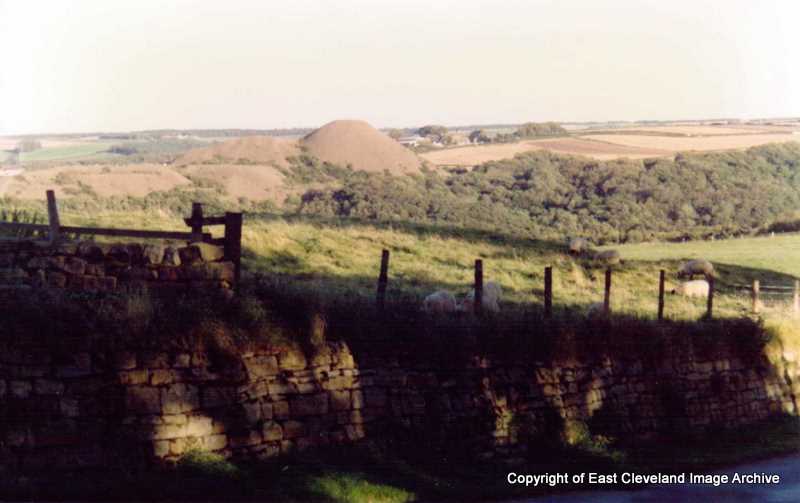 Liverton Mines shale heap, photograph taken from Kiltonthorpe, the summer before it was reduced in height and landscaped. Image courtesy of Eric Johnson. 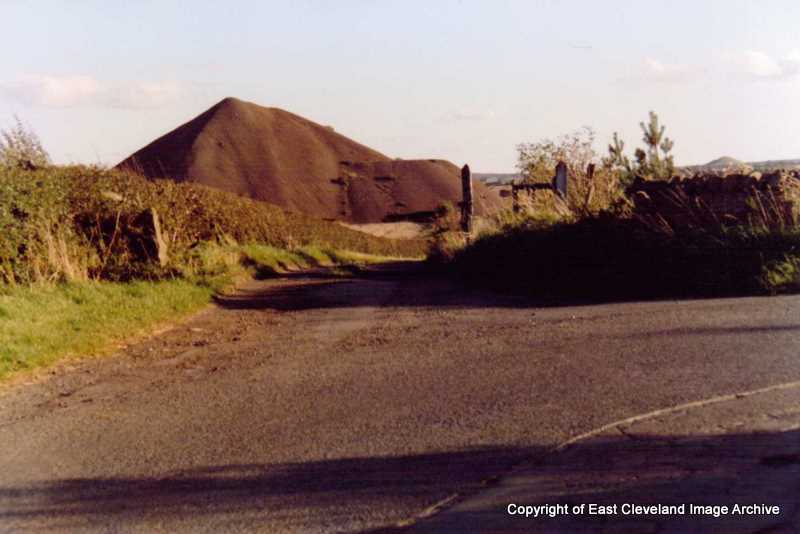 Two hills in the landscape, one artificial the other a natural formation, in the foreground Kilton Mine shale heap. In the distance on the right Freebrough Hill. An attempt has been made to keep the shale heap as a relic of the Ironstone Mining legacy of the area. But it would seem some of the tip has disappeared. Image courtesy Eric Johnson. 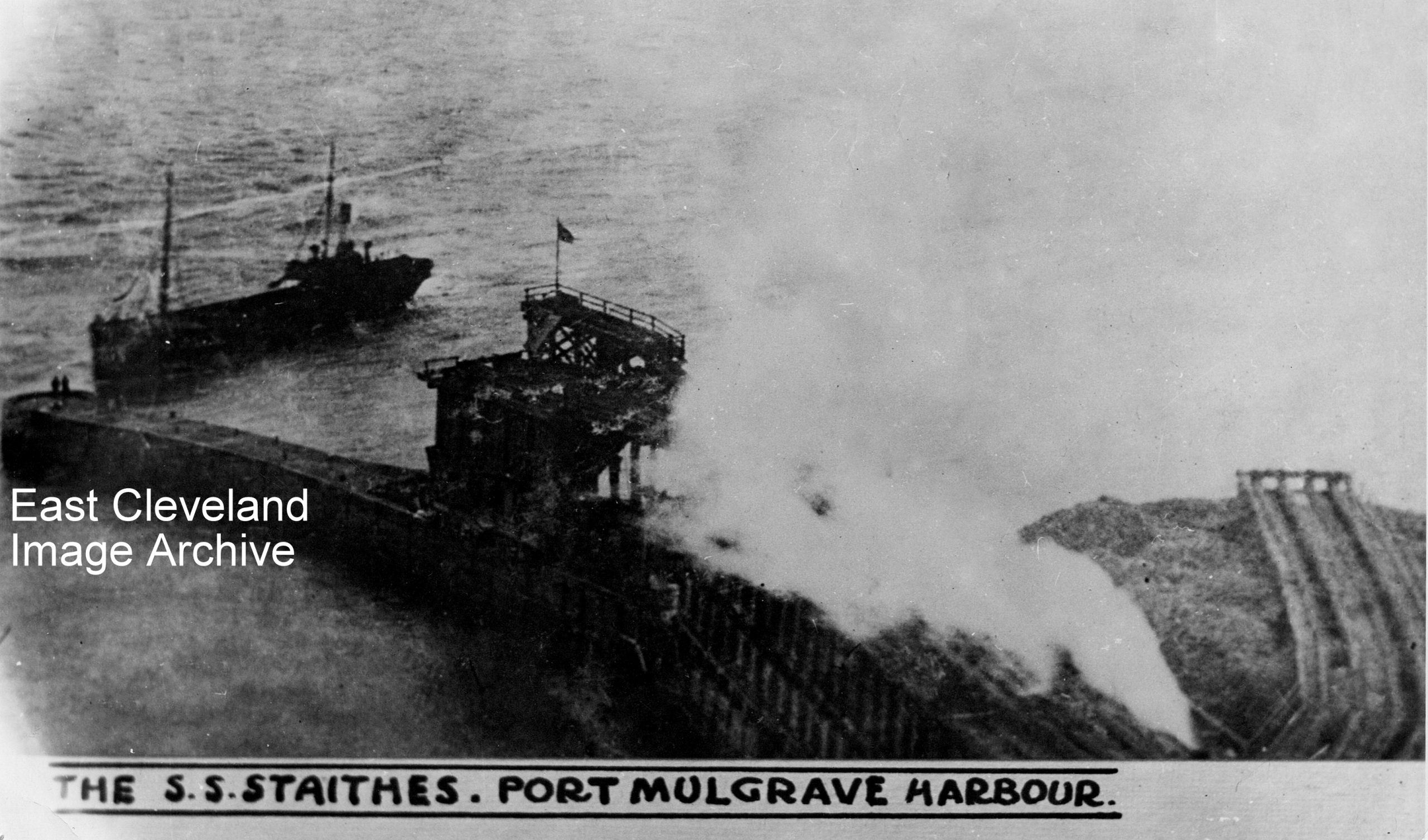 A view of SS Staithes; one of the many ironstone ore carriers that plied their trade between Port Mulgrave and the iron works on the River Tees. The smoke to the lower right of the image would appear to be from a chimney; although Jim Wallace suggests: “Looks like the fire of c.1911.” Image courtesy of Maurice Grayson. 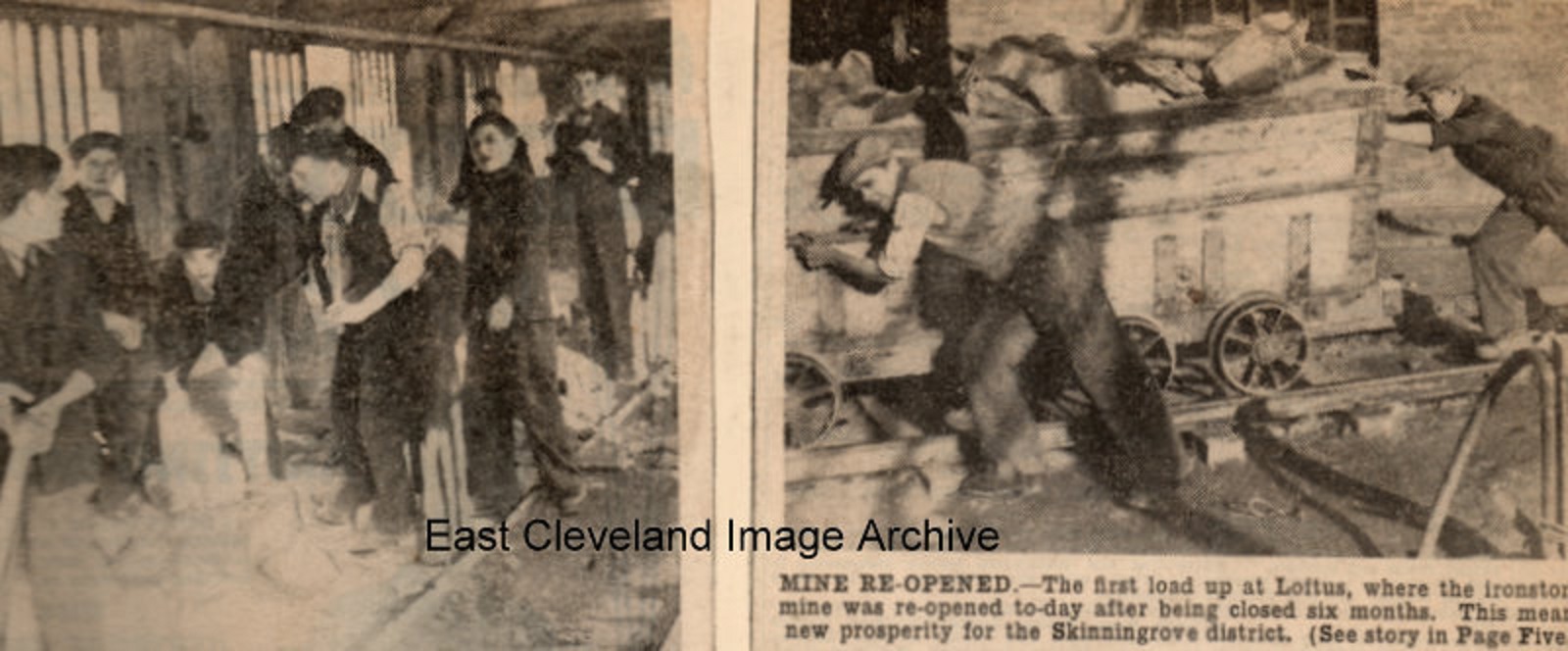 1939; two cuttings regarding the re-opening of Loftus (Skinningrove) mine; left image: sorting shale from ironstone on the large conveyor belt at Loftus where the ironstone mine re-opened after being closed since last August. This will mean employment for several hundred men, the ore extracted will be supplied to Skinningrove Iron works where 2 addition calcining kilns are to be re-lighted. The right image is the first load up at Loftus. A cutting from a collection gifted to the Archive, most of the cuttings coming from the Northern Echo and cover the period 1930 to 1940. 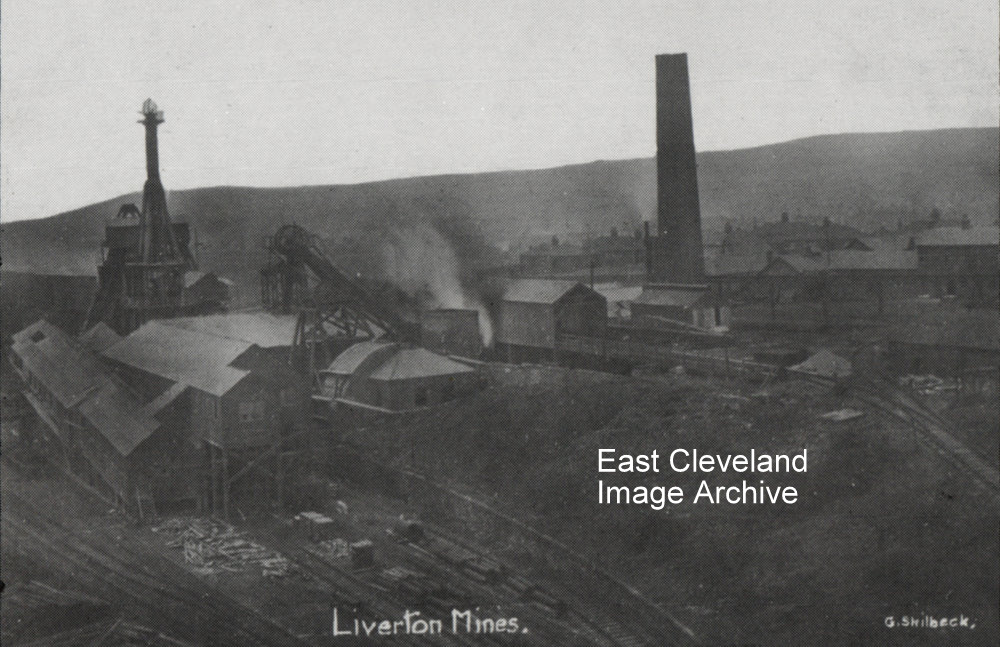 A George Skilbeck postcard of Liverton Mine, sunk by the New London Company about 1871 and closing in 1923, the eventual owners were Cargo Fleet Iron Co. Southbank. That answers the question often posed as to why Liverton Mines was often referred to as New London. George Nicholson comments: “I’ve lived at Liverton Mines since 1967 and still cannot believe the work that went on there. I will never understand why thy decided to cover the shale tips. Apart from the history of the area they made nothing but a mess.” Image courtesy of Joan Jemson, thanks to Mark Nicholson for the update. 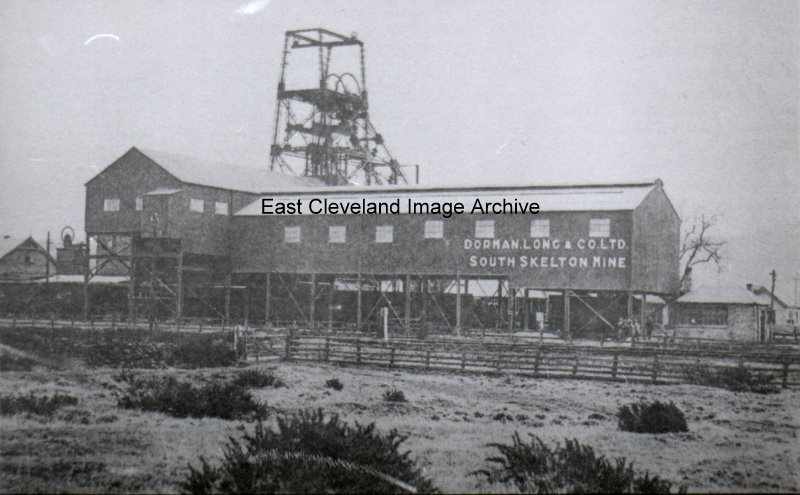 Well I couldn’t go wrong with this photograph could I? The name of the mine and the owners in plain sight on the building. The mine was situated close to Boosbeck and closed in 1954. Image courtesy of Eric Johnson. 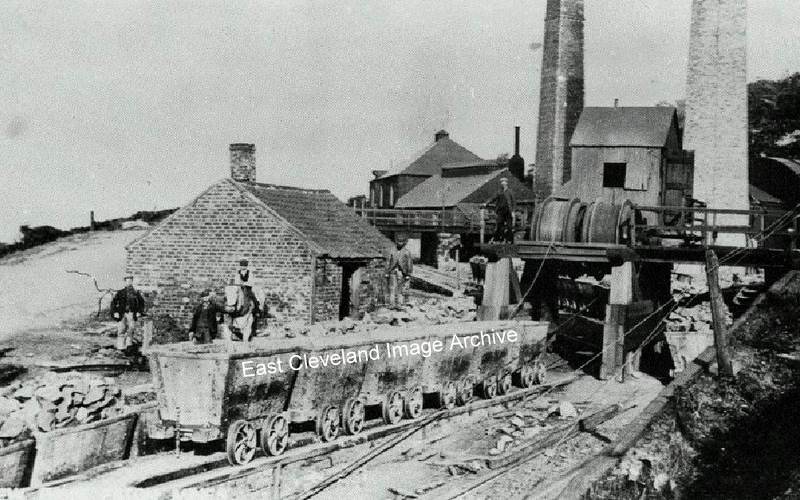 Eston Mine; with the Hauler which hauled the wagons (trucks) up, or let them down, part of the incline. The rope attached from the Hauler drums and the Hauler man on the left side on the Drum bridge. The square opening on the building behind was where the Hauler or Winder man looked out over the proceedings. Note there are also more trucks under the bridge going further up to the left and next section. Image courtesy of a compilation by Derick Pearson; also the supporting information. |
||
Recent Comments